
- Courtesy Of Douglas Brooks
- Douglas Brooks apprenticing with a Japanese master boatbuilder
In February, millions of TV viewers tuned in to Hulu and FX to watch the world premiere of "Shōgun," a 10-part miniseries based on the 1975 best-selling novel by James Clavell. Because the story is set in 17th-century feudal Japan, Disney/FX, which produced the series, needed a consultant for building the dozens of traditional Japanese canalboats, fishing vessels and samurai warships that figure prominently in the show.
Rather than scouring Japan's maritime museums or shipyards for such an expert, the studio instead turned to Douglas Brooks, an American boatbuilder from Vergennes. The decision to hire Brooks wasn't meant as a snub to Japan's own craftspeople. Arguably, no one was more qualified to provide the technical know-how, historically accurate designs and authentic rowing techniques featured in the show.
A scholar, writer and teacher of traditional Japanese boatbuilding, Brooks, 63, apprenticed under nine Japanese master boatbuilders between 1996 and 2019 and wrote six books on his experiences. His 2015 book, Japanese Wooden Boatbuilding, is the only comprehensive guide to the subject published in any language. Brooks has taught courses on traditional Japanese boatbuilding at schools around the country, including Middlebury College, Harvard University, the University of Illinois and Deep Springs College in California. In fact, when Disney/FX needed additional watercraft for its 2021 shoot in Port Moody, B.C., they bought two flat-bottomed fishing boats that Brooks had built with his students at Bates College in Maine.
"Just don't call me a master," Brooks said emphatically. He cringes whenever journalists use that word to describe him. "I have such enormous respect for the seriousness of the Japanese craft and its practitioners. In Japan, often you don't call yourself a master until your own master has passed away."
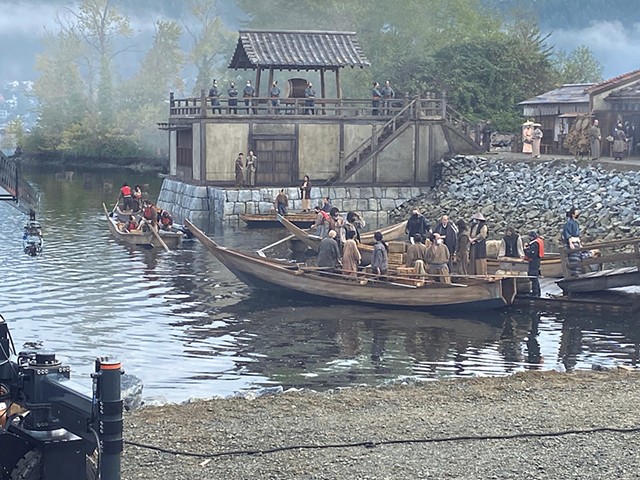
- Courtesy Of Dean Eilertson
- The set of the Hulu series "Shōgun"
That time is fast approaching. All nine of Brooks' teachers were in their seventies or eighties when he met them, and only four are still alive. All but two had no other apprentices, and their techniques had been passed down orally for generations. A couple of masters hadn't built a boat in decades when Brooks studied under them.
In short, the art of traditional Japanese boatbuilding was rapidly sinking into oblivion when Brooks helped rescue it. Dean Eilertson, who worked as property master on the "Shōgun" film shoot in Vancouver, B.C., credits Brooks with preserving the ancient craft for future generations through his writing, teaching and advocacy. "Without Douglas," he said, "all that would be lost."
Because Eilertson is himself an avid sailor with extensive knowledge of boats, the Disney/FX studio charged him with finding an expert on traditional Japanese vessels. He immediately discovered Brooks, who provided Eilertson with more than boat suggestions and period-accurate designs. In September 2021, Brooks flew to Vancouver to train actors on rowing the boats using authentic Japanese sculling oars. As Eilertson put it, "There was nobody else out there who was going to be able to help us."
'The Fragility of the Craft'
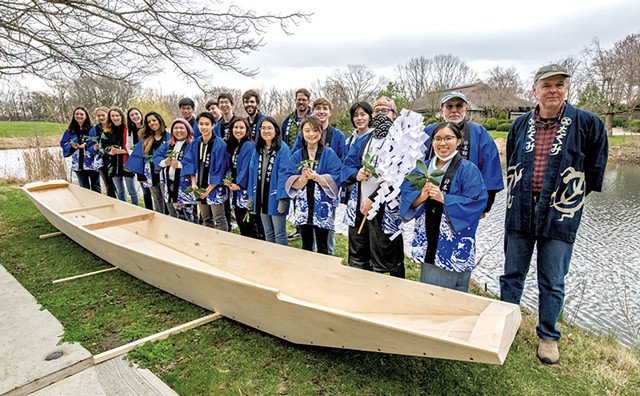
- Courtesy Of Fred Zwicky
- Douglas Brooks (right) with students in his 2022 Japanese boatbuilding course at the University of Illinois
Brooks and his wife, Catherine, live in a 19th-century house off Main Street in Vergennes. He's an amiable man who seems naturally inclined to teaching, with a shipwright's attention to detail. The couple met in 1993, when Brooks drove east from Portland, Ore., to speak at a maritime museum conference in Boston. On the way, Brooks stopped in Vermont to see the Ticonderoga steamboat restoration underway at Shelburne Museum. That's where he met Catherine, who, at the time, worked at the museum as director of education. The couple began a long-distance courtship, and Brooks relocated to Vermont in 1997, the year they married. One of his first jobs after he moved was working as a restoration carpenter on the Ticonderoga. He's since built Western-style vessels for the Lake Champlain Maritime Museum in Vergennes and the Henry Sheldon Museum of Vermont History in Middlebury, among others.
But Brooks is best known for his Japanese watercraft. In his tiny office cluttered with papers, books, drawings and other artifacts, he showed a reporter a mid-20th-century boat schematic he had drawn on a wooden plank, which many master builders would use for sketching designs. Japanese maritime museums have thousands of such planks, Brooks said, though no one could actually use one to build a boat; the plans were deliberately left incomplete to protect the masters' secrets.
Next, Brooks held up a three-foot wooden stick, with three small rods protruding from it. Though the object looked as simple as a back scratcher, Brooks explained that a Japanese boatbuilder gave him this "pattern" — what his teacher called a shichizumanokata — to construct a 42-foot cormorant boat.
How? Each of the three rods protrudes at a different angle, which is critical for the hull's assembly. Aside from those details, everything else was built from memory. To traditional Japanese boatbuilders, the Western notion of writing down their methods in a book or teaching them to strangers, as Brooks has done, would be unthinkable. To them, these techniques were closely guarded family secrets.
"There's the fragility of the craft," he said.
How did an American craftsman, with no Japanese heritage or Japanese language skills, gain the trust of these elderly and secretive masters? It's a testament to the seriousness, humility and patience with which Brooks approached the task, which took him decades. Brooks' extensive knowledge of Western-style boatbuilding didn't hold water with his Japanese mentors, he said. He had to prove himself in their workshops, using their hand tools and centuries-old techniques.
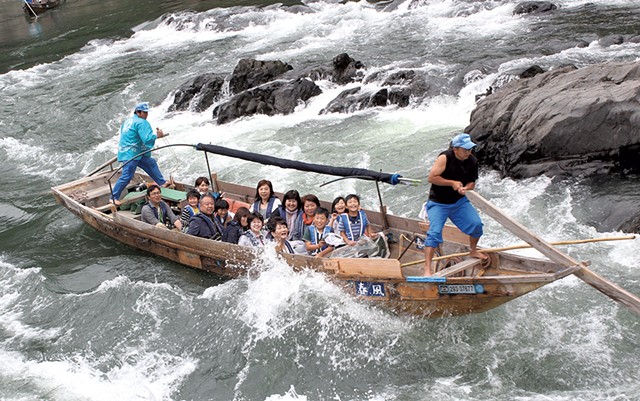
- Courtesy Kumagawa Kudari
- A traditional riverboat built by Douglas Brooks for Kuma River Boat Cruises
Brooks grew up in Deep River, Conn., the son of a carpenter. Living near the Connecticut River fostered an early love of watercraft and sailing. By high school, Brooks worked at a local yacht club and owned a small sailboat.
While attending Trinity College, Brooks participated in a semester-long program at Mystic Seaport Museum. His woodworking skills landed him an assignment with the museum's boatbuilder, and the pair built a boat together that's still on display.
The following year, Brooks spent a semester at the University of Oregon, where he roomed with a Japanese student from Hiroshima named Nobu Hayashi. The two became good friends. "For nearly a decade after we graduated, he kept begging me to visit Japan," Brooks said.
After graduating in 1982, Brooks landed a job at the San Francisco Maritime National Historic Park Museum as an assistant boatbuilder. When he finally left the museum in 1990, he wrote his Japanese friend to share the news.
"Nobu immediately wrote me back with an envelope, a plane ticket and a note that said, 'Now you have no excuses,'" Brooks said.
Brooks arrived in Japan with a rail pass and a Lonely Planet travel guide. He stopped at all the usual tourist destinations and visited Hayashi and his family in Hiroshima.
"I got about halfway through my trip and realized I was burnt out. I felt like I couldn't look at another shrine and another temple," Brooks recalled. "But I remember very clearly saying to myself: There's one thing I never get tired of looking at, and that's wooden boats."
Brooks began exploring Japan's coastline looking for traditional wooden vessels. In Tokyo, Hayashi took him to Asakusa, an old section of the city. Brooks had read an article about a boatbuilder there and remembered his name: Sano. With directions to the Sano Shipyard and Hayashi as his interpreter, he met Sano and his son, who were eighth- and ninth-generation boatbuilders, respectively.
"What I came to discover is Japanese boatbuilders were all elderly and they had no apprentices," Brooks said. "And next to nothing was written down."
Stem to Stern
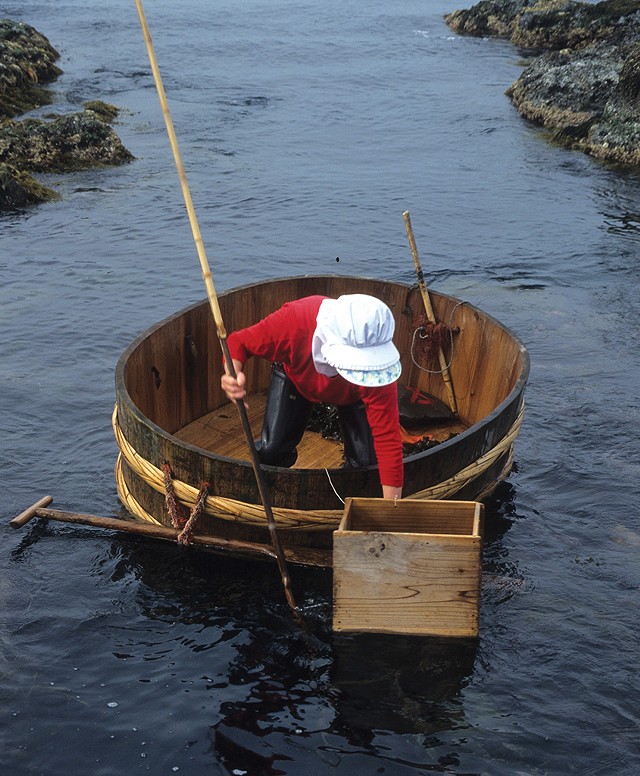
- Courtesy Of Douglas Brooks
- A traditional Japanese tub boat from Sado Island
Indeed, by the 1990s, traditional wooden boatbuilding in Japan was foundering. Nearly all the master boatbuilders Brooks met had been in their teens during World War II. The last generation to follow their fathers into the profession, they came of age at a time Japan was bouncing back; it had become the world's second-largest economy. Meanwhile, fiberglass boats were putting wooden-boat builders out of business. The old masters saw the writing on the wall. "They turned to their sons and said, 'Go work for Panasonic,'" Brooks said.
On his first trip to Japan, Brooks visited Sado Island, in the Sea of Japan, known for producing a round wooden boat that resembles a barrel. There, Brooks met Koichi Fujii, the last surviving builder of taraibune, or Japanese tub boats.
Brooks tried to interview Fujii to learn how his barrel-like boats were made. To answer his questions, the old master led Brooks to his workshop and demonstrated for him instead — not because of a language barrier, but because, even in Japanese, Fujii lacked a vocabulary for his techniques. In Japan, apprentices learn through silent observation.
When Brooks returned to Sado Island, in 1994, he realized that the only way to thoroughly document and preserve Fujii's craft was to become his apprentice and build a boat with him. However, when Brooks told his interpreter what he wanted to ask Fujii, she refused. As Brooks recalled, she told him: "You're a foreigner, you don't speak Japanese, and this is the wrong protocol."
The next day, Brooks said goodbye to Fujii and returned to his inn. Later that night, the innkeeper knocked on his door and informed him that Fujii had come to see him. Assuming something tragic had happened, Brooks hurried down to the kitchen, where Fujii and his wife were waiting with the innkeeper, drinking tea.
"Mr. Fujii looks at me and says something, and my interpreter gasps," Brooks recalled. "She looks at me and says, 'He's asking you to become his apprentice.'"
Brooks returned to Sado Island in 1996. By then, he spoke a smattering of Japanese, mostly nouns and verbs related to boatbuilding. He lived with Fujii for two weeks, and they built a traditional tub boat together. After that, Brooks never saw his teacher again. In 1999, Fujii died in a tragic accident.
Later, Brooks wrote a how-to guide about his apprenticeship, The Tub Boats of Sado Island: A Japanese Craftsman's Methods. His drawings of the unusual vessels were the first ever published. The Tub Boats of Sado Island is now well known not only among wooden boatbuilders but also Japanese barrel makers.
Brooks has since returned to Japan numerous times, usually to seek out other boatbuilders. Since the trade has no professional guild or directory, Brooks would travel the coast, looking for wooden fishing fleets. Upon finding one, he'd approach a local fisherman and ask, "Is there a wooden-boat builder here?"
Assuming the master hadn't already died, as was often the case, Brooks would visit the man's workshop — all his teachers were men — and ask for instruction. Often, the masters said nothing, and Brooks would return another day and ask them again. One of Brooks' teachers said no to him for 15 years before he finally relented.
"I think they reached a point where they realized what was about to be lost," Brooks said. "I was their last chance."
Sea Change
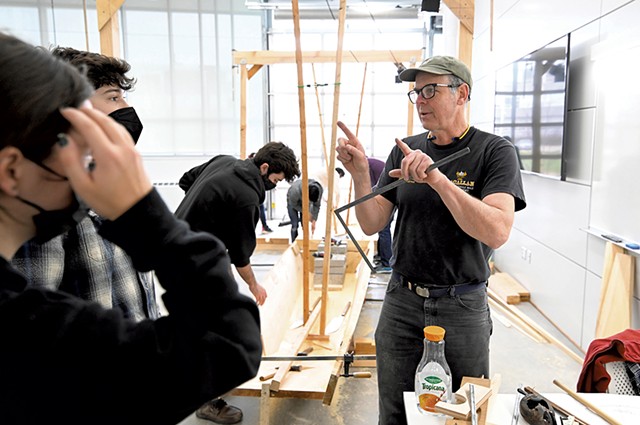
- Courtesy Of Fred Zwicky
- Brooks teaching Japanese boatbuilding at the University of Illinois in 2022
Though a traditional Japanese apprenticeship lasts six years, Brooks, whose trips were usually grant-funded, would only work with his masters for as long as it took them to build one boat together — from two weeks with the Sado Island boatbuilder to seven months with his Tokyo teacher, a fourth-generation master.
All of his teachers taught Brooks the way they'd been taught, meaning the first tool he handled was a broom. At the beginning, Brooks did nothing but sweep, sometimes for days on end. In Japanese, the word for craftsperson, kibishii, also means "strict."
"My work had to be perfect, or I was handed the broom and sent back to sweeping," Brooks said.
In a customary six-year apprenticeship, a student might never touch a tool for the first two years. Come year three, however, "If you're asked to do something, you're expected to know how to do it," Brooks said. "I got the same treatment." All the construction was done in complete silence.
Brooks' skills at Western-style boatbuilding served him well, even if his teachers wouldn't openly acknowledge it. He remembers the day when he overheard his teacher talking to other boatbuilders about him. Brooks' ears pricked up when he heard the Japanese word his master used to describe him: "serious."
"I honestly don't think there's been a more complimentary thing said about me in Japan," Brooks said.
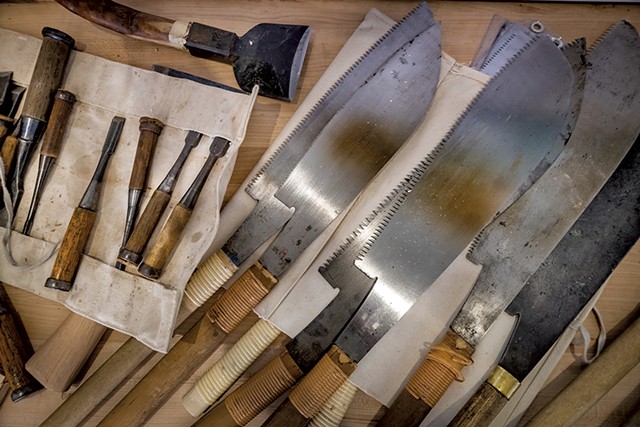
- Courtesy Of Fred Zwicky
- Traditional Japanese hand tools
There's one element of his Japanese lessons that Brooks didn't adopt, however: its secrecy. Brooks' success in documenting and teaching the traditional boatbuilding process has attracted attention well beyond Hollywood. His work coincides with Japan's nascent back-to-the-land movement, in which a growing number of Japanese youths, disaffected by modern corporate culture and the idea of "living in a box in Tokyo," are rediscovering forgotten rural skills. Brooks is regularly contacted by people from Japan and elsewhere who want to take his classes and learn the trade. He's also won contracts to build tourist vessels for Japanese river-tour companies.
"Fifteen years ago, I would have said to myself, Me and several hundred old boatbuilders are the only people on earth who care about Japanese boats," he said. "Now, my dream would be to create a boatbuilding school, because that's the only way to save this craft."
In all his boatbuilding classes, Brooks and his students complete the vessels they build together by embedding in them a Shinto shrine, then holding a launch ceremony, both practices he learned from his Japanese masters. Traditional shrines often contain rice cakes, vegetables, cloth dolls and a five-yen coin. The Japanese word for the coin, goen, also means "good fortune." Also included: a pair of hand-carved wooden dice. Why?
"You're going out on the ocean and taking a chance," Brooks said. "This is dangerous stuff."
Correction, April 18, 2024: An earlier version of this story misspelled two Japanese words: “kibishii,” meaning “craftsperson” and “strict;” and "goen,” meaning “good luck."





Comments
Comments are closed.
From 2014-2020, Seven Days allowed readers to comment on all stories posted on our website. While we've appreciated the suggestions and insights, right now Seven Days is prioritizing our core mission — producing high-quality, responsible local journalism — over moderating online debates between readers.
To criticize, correct or praise our reporting, please send us a letter to the editor or send us a tip. We’ll check it out and report the results.
Online comments may return when we have better tech tools for managing them. Thanks for reading.